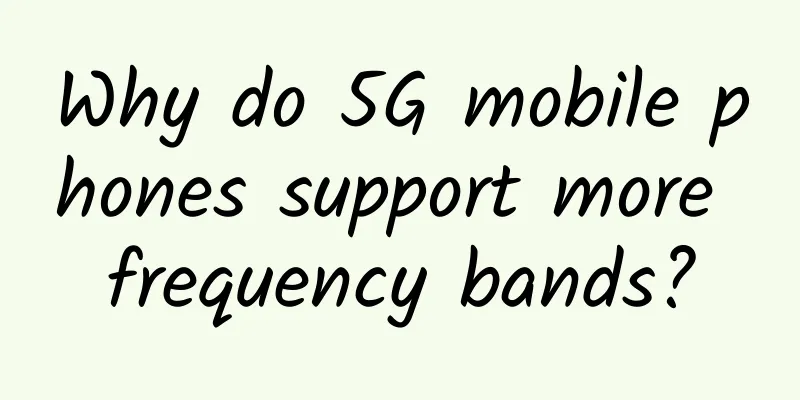Why do 5G mobile phones support more frequency bands?

|
How many 5G frequency bands a mobile phone can support has always been a must-have publicity focus for many mobile phone manufacturers, and it is also a key issue for everyone. Because the more frequency bands your 5G device supports, the more 5G networks you can connect to, allowing you to use 5G high-speed networks anytime, anywhere. Since Honor officially announced that Honor X10 supports NSA/SA 5G dual-mode networks and 9 frequency bands, it has also attracted the attention of netizens. The 5G network frequency bands supported by Honor X10 are the most in the industry. Why is more support for 5G frequency bands so important? The advent of the 5G era brings us more possibilities. 5G not only means faster network speed and greater network capacity, but also the foundation for the implementation of the Internet of Everything (IOT), which means that machines will be more automated. A series of applications such as virtual reality, the Internet of Things, artificial intelligence, smart cities, ultra-high-definition video, etc. will usher in a broad application space with the more powerful 5G. The development of 5G also comes from the growing demand for mobile data. 5G has four major characteristics: high speed, ubiquitous network, low power consumption, and low latency. It is also in order to meet the growing demand for mobile traffic that it is urgent to develop a new generation of 5G mobile communication networks. About the concept of 5G: Compared with 4G, 5G has three revolutionary advances: enhanced mobile broadband, ultra-reliable low latency, and massive machine-type communications, which correspond to user experience rates greater than 1 Gbps, latency less than 1 millisecond, and 1 million connections per square kilometer, respectively. However, the realization of all this depends on abundant spectrum resources, so 5G has much more spectrum resource allocation than 4G. About Sub6G and millimeter wave We know that according to the 5G standard of 3GPP, the 5G spectrum is divided into two areas, FR1 and FR2. FR means Frequency Range. The frequency range of FR1 is 450MHz to 6GHz, also called Sub6G (below 6 GHz). The frequency range of FR2 is 24GHz to 52GHz. Most of the wavelengths of electromagnetic waves in this spectrum are at the millimeter level, so it is also called millimeter wave mmWave (strictly speaking, it is called millimeter wave only when it is greater than 30GHz). At the same time, these frequency bands are numbered according to the frequency range, which is the origin of the numbers N41, N78, and N79. FR1(450 MHz–6000MHz): FR1: As shown in the figure above, 5G NR includes some LTE bands and also adds some new bands. At present, the 5G bands most likely to be deployed globally are n77, n78, n79, n257, n258 and n260, which are 3.3GHz-4.2GHz, 4.4GHz-5.0GHz and millimeter wave bands 26GHz/28GHz/39GHz. In fact, spectrum also has its own advantages and disadvantages. The advantages of FR1 are low frequency, strong diffraction ability, and good coverage. It is the main spectrum for 5G at present. FR1 is mainly used as the basic coverage frequency band, and supports a maximum bandwidth of 100Mbps. Among them, the part below 3GHz includes the 2G, 3G, and 4G spectrum used in the existing network. In the early stage of network construction, some resources of the old site can be used to realize the rapid deployment of 5G network. The advantages of FR2 are ultra-large bandwidth, clean spectrum, and less interference. It is used as the subsequent expansion frequency of 5G. FR2 is mainly used as a capacity supplementary frequency band, and supports a maximum bandwidth of 400Mbps. In the future, many high-speed applications will be realized based on this spectrum. The peak rate of 5G up to 20Gbps is also based on the ultra-large bandwidth of FR2. What frequency bands do the three major operators support? In my country, only the frequency bands in FR1 are allocated, and the frequency bands supported by the three major domestic operators are as follows. At present, the three major domestic operators have launched 5G traffic packages, and major brands have also released new 5G mobile phones. It can be seen that China is now gradually moving towards the full popularization of 5G. If a mobile phone wants to have an excellent 5G experience, the 5G frequency band supported by the mobile phone itself is very important. If your 5G mobile phone does not support a certain frequency band, and the operator happens to use this frequency band, then your mobile phone will not receive 5G signals. Most of the current 5G mobile phones are very similar in the frequency bands they support. For example, the n41 and n78 frequency bands are commonly used frequency bands, and the n79 frequency band will not be of much use in the next few years. According to the "China Mobile 2020 Terminal Product Plan", starting from January 1, 2020, 5G terminals must support SA/NSA dual-mode and support n41, n78, and n79 frequency bands (the n79 frequency band is relaxed to July 1). China Telecom clearly requires that 5G terminals must support n1 and n78, and China Unicom also requires that 5G terminals must support n1 and n78. From the spectrum allocation point of view, China Mobile once again took on the heavy responsibility, because the n41 and n79 bands are not as mature as n78 in terms of chips, equipment or terminals, which means that China Mobile needs to spend a lot of cost and energy to promote the development and application of the entire industry chain. At the same time, the n41 band includes the 2.6GHz band currently used by 4G. If 5G wants to use 100Mbps bandwidth in FR1, it must move 4G to the high frequency band to free up 100M for 5G, which is equivalent to the current 2.6GHz D-band equipment needs to be scrapped and replaced. N78 is the main frequency band in the world. Currently, many countries' 5G pilots use the 3.5GHz band of N78. The industry chain is mature, which means that China Telecom and China Unicom can deploy 5G networks at a lower cost. Therefore, it can be seen that in China, terminals that support the four frequency bands of N1, N41, N78, and N79 are truly full-network 5G terminals. Is it really necessary to support more 5G frequency bands? In fact, it is necessary. In the 5G era, the core competitiveness of 5G mobile phones lies in frequency bands and signals. The more 5G frequency bands your 5G devices support, the more your 5G devices can find the 5G frequency bands that match yours, whether you are at home or abroad. A truly full coverage of 5G signals is what consumers expect, isn't it? So it is useless to be said that supporting more 5G frequency bands is useless. Only when you actually use it will you discover its benefits. |
Recommend
Mobile front-end: mobile page pitfalls and pitfall prevention techniques
[[124210]] For front-end developers, there are mo...
Short video marketing: How to quickly create short Douyin videos that can go viral and bring sales!
In the past 2018, " short video marketing &q...
How to attract traffic on both online and offline platforms? Share a few tips!
Competition among Internet products is becoming i...
Seven key points to help you easily occupy the top spot in the Google Play Store!
If your foundation is strong enough and your app ...
How to optimize memory in Android development
Editor's note: Some of the content in this ar...
In-depth analysis of the 9.9 yuan training camp to help you understand group sales
I guess many people have seen or participated in ...
Case | Tencent’s advertising data sharing for advertisers’ reference!
Today, the editor will share with you the data of...
Xiaohongshu account positioning reference guide!
I don’t know if you have noticed recently that th...
Second category e-commerce丨Practical information! Teach you how to do product launch testing!
In the previous issues, we talked about the produ...
Event operation review: How did I attract 40,000+ fans with just one poster?
The core position of the "content is king&qu...
How to create a mini program for sending recruitment information or job search information?
Q: How to create a mini program for sending recru...
The most "depressing" Double 11 copy is here, you will laugh like crazy after reading it!
The annual big shopping festival is here again, a...
How to promote wedding photography? Mayu platform marketing and promotion strategy!
With the arrival of summer, the wedding photograp...
How do overseas Chinese restaurants obtain WeChat mini-program authentication?
Q: How do overseas Chinese restaurants authentica...
On Mother's Day, I wrote copy for Jiang Xiaobai, Durex, and NetEase Cloud Music!
Durex and Jiang Xiaobai took advantage of the pos...









